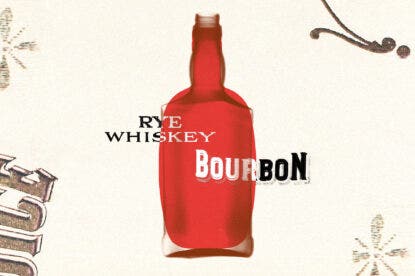In 1997, plant geneticists proved definitively that the grape variety Cabernet Franc is one of the direct parents of Cabernet Sauvignon, conceived centuries ago during a fertile fling with Sauvignon Blanc in a French, or possibly Spanish, vineyard.
When researchers at the University of California, Davis, announced that genetic testing had confirmed the parentage it was an exciting, but not exactly bolt-out-of-the-blue moment. That’s because of the overlapping, and sometimes confusing, names.

Franc in France
France is the world’s biggest producer of Cabernet Franc by far. The International Organisation of Vine and Wine (OIV) claims approximately 81,500 acres in the country were devoted to Cabernet Franc in 2015, less than Cabernet Sauvignon’s nearly 120,000 acres.
Within France, Cabernet Franc and Cabernet Sauvignon are identified closely with the Bordeaux region, where the existence of Cabernet Franc was recorded as early as the 1600s and Cabernet Sauvignon in the 1700s.
Scholars believe that Cabernet Franc came to the Loire Valley in the 1600s, where it remains the mainstay of red wines from Chinon, Anjou-Saumur and other appellations. Evidence suggests, however, that it may have prospered in the Basque region of Spain even earlier.
Cabernet Franc wines from Chinon are often lighter, less tannic and more herbaceous in flavor than Cabernet Sauvignon. These medium-bodied, nervy and savory renditions are more in line with a Sangiovese from Tuscany or a Côtes du Rhône than a bold Cabernet Sauvignon. Cabernet Francs from warmer climates like Bordeaux, Tuscany or California can pair very similarly with food as Cabernet Sauvignon.

Cabernet Franc’s role in Bordeaux
For centuries, the Bordeaux tradition has been to mix Cabernet Sauvignon and Cabernet Franc together with Merlot, and, to a lesser extent, Petit Verdot, Malbec and Carmenère. This “Bordeaux-style blend” is now copied around the world, from Tuscany to Chile and California.
Wine lovers understand Merlot as a softer, more approachable wine than Cabernet Sauvignon, which brings a gentle touch to a blend. However, Cabernet Franc is not always so tame. It can add a twist of green or black peppercorn, a pinch of grilled sage or a whiff of tobacco.
One of the most celebrated producers in Bordeaux to use Cabernet Franc as its lead grape is Château Cheval Blanc in Saint-Émilion. Planted to 52% Franc, 43% Merlot and 5% Cabernet Sauvignon, the Premier Grand Cru estate proves that Cabernet Franc does not always make lean wines.
When truly ripe and grown in ideal locations, the dark blue-to-black Cabernet Franc grapes can yield generous, mouth-filling blueberry flavors, full body and grippy tannins. Its wines can age and improve for decades.
Most vineyards in the Right Bank appellations, which include Saint-Émilion and Pomerol, grow both Merlot and Cabernet Franc. Merlot dominates at famed Château Petrus and many other properties, but chateaus like Angélus, Lafleur and Le Dôme emphasize Cabernet Franc.
Appellation laws for Bordeaux wines don’t allow varietal names on the labels. Buyers of French wines instead focus on geographic identity and brand. Whether labeled with the broad, regional appellations like Bordeaux Appellation d’origine contrôlée (AOC) or even the more defined like St.-Émilion AOC, it hasn’t been vital to know the varietal content to gauge a wine’s quality and taste.
The geographic naming convention gives Bordeaux winemakers flexibility when weather affects one grape variety, but not others. Cabernet Franc vines begin to grow earlier in the spring than Cabernet Sauvignon, and they usually ripen a week or two earlier.
During vintages where the weather turns cold and rainy in the late summer or early fall, it can bring dilution and spoilage in Cabernet Sauvignon still on the vines. However, Cabernet Franc may have already been harvested in great condition under sunny skies.
For the same reason, Cabernet Franc is more popular in several of the world’s more northerly and cool wine regions, where Cabernet Sauvignon, a notorious late-ripener, may not become ripe enough to make consistent high-quality wine. Examples include the Loire Valley of France, the northern Italian regions of the Veneto and Friuli-Venezia Giulia, and the Finger Lakes region of New York, where Franc is the third most popular Vitis vinifera variety.

Cabernet Franc outside of France
Cabernet Franc has a blizzard of synonyms that attest to its longevity and broad geographic reach in Europe. Italy has 15,600 acres of it, and Hungary 3,300 acres. According to Wine Grapes: A Complete Guide to 1,368 Vine Varieties, Including Their Origins and Flavours by Jancis Robinson, Julia Harding and José Vouillamoz (Ecco, 2012), growers call it Tsapournako in Greece, Verdejilla Tinto in Spain, Achéria in Basque Country, simply Bordeaux in Switzerland and Bordo in Romania. Even within the greater Bordeaux region, some locals use the names Bidure, Bouchet Franc and Cabernet Gris.
Cabernet Franc’s Aliases
Tsapournako (Greece)
Verdejilla Tinto (Spain)
Achéria (Basque Country)
Bordeaux (Switzerland)
Bordo (Romania)
Bidure, Bouchet Franc, Cabernet Gris (Bordeaux)
Cabernet Franc also has taken root around in the New World. It’s a popular grape variety in Argentina, South Africa, Australia, Chile, Washington State, California and New York.
In the U.S., Cabernet Franc totaled about 4,000 acres in 2015, according to the United States Department of Agriculture, with the majority in California. Napa Valley wineries La Jota, Corison and Lang & Reed make excellent examples. Pride Mountain in Sonoma, Daou in Paso Robles and Lava Cap in El Dorado also make standouts. Washington wineries Pearl & Stone and Barrister have done extremely well with the variety, too.
With many wonderful wines to choose from, there’s no reason that Cabernet Franc’s offspring should always steal the spotlight. Cabernet Franc hit the stage first, perfected its role in the classic European regions and has taken the show on the road. It stars on wine lists and retail shelves near you. Cabernet Franc is well worth the price of admission, because the classics never go out of style.
Last Updated: May 5, 2023















